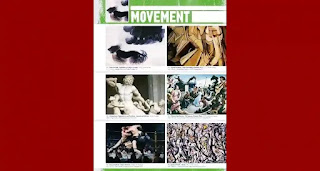The difference between art movements, art schools and art styles
Technical terms are a vast sea and beginners often have difficulty differentiating them, especially since they are words that were originally translated and named in languages other than Arabic. The translation of words may not have the same meaning with the reason for denomination, and each art historian or technician may have a particular definition of the term, making it difficult to define the true concept. However, there are artistic terms to which a more comprehensive concept and definition applies, including artistic schools and movements.
What are the artistic movements:
Movement is what is adopted by a group of artists who share the same interest, whether objectively, stylistically or a certain ideology. It is passed between artists and begins as a new way of representing something, or it can be built on a specific basis. artistic philosophy that is often affected by societal, political or cultural circumstances, but the great influence comes from the latter. Art movement must be a specific period of time in which folk art shares similar patterns that can be divided into several styles, but with a single artistic orientation.
The most famous example of this is the period and movement of Impressionism that emerged in the 1860s. It is a movement that adopted several methods, such as focusing on capturing light and movement with rapid strokes on the paintings. Claude Monet. The movement would continue until the 1870s and a new movement would emerge. Post-Impressionism is characterized by its more specific methods, such as focusing less on light and more on how colors work. Among the most famous artists of this style we find Van Gogh.
The difference between movement and art school:
The Impressionism movement was responsible for the emergence of several new styles and artistic schools, such as the school of Cubism, Expressionism, Futurism and Symbolism, and it is considered one of the most important eras. most brilliant in art. which leads artists to creativity and to invent new schools. For example, impressionism represents the idea of rebellion against classical art and artistry. Academic, which led Picasso to love creating a style and school of art like Cubism, which threw everything classical and academic to the wall, especially since it was supported by the majority of religious artists who had the same thought and followed the same movement, and the latter could also be the result only as a way of rebellion, as if it could be described as a demonstration. The gathering of many artists takes place and each of them expresses in their way of seeing the concept of their support and what the movement adopts for me. The movement is what creates styles and schools for us and produces for us everything that is new and unknown.
The movement is associated with a specific period, while the style and schools are the result of a method of expression specific to each era. The movement is formed under a generation of artists who follow the same thought, while the style and schools are produced under one and the same generation. or several artists who follow a new approach to expression with a certain philosophy in it. It starts as a new artistic style and when it is followed For many artists it becomes a school, and the latter is called this school due to several factors, which artists have a stage, whose style they adopt and apply , and they have the same expressive goals.
Art style:
Style can be a specific style or unique method of expression, such as pointillism, or style can refer to the philosophy behind a work of art. Style can be an approach followed in the method of implementation.
Learn more:
- What are the artistic doctrines and their types? Artistic doctrines and their character
- What is the difference between the artistic movement and the artistic school ? Definition o

إرسال تعليق